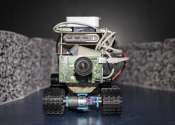Insects (Class Insecta) are arthropods, having a hard exoskeleton, a three-part body (head, thorax, and abdomen), three pairs of jointed legs, compound eyes, and two antennae. They are the most diverse group of animals on the planet and include approximately 30 gladiator and icebug, 35 Zoraptera, 150 snakefly, 200 silverfish, 300 alderfly, 300 webspinner, 350 jumping bristletail, 550 scorpionfly, 600 Strepsiptera, 1,200 caddisfly, 1,700 stonefly, 1,800 earwig, 2,000 flea, 2,200 mantis, 2,500 mayfly, 3,000 louse, 3,000 walking stick, 4,000 cockroach, 4,000 lacewing, 4,000 termite, 5,000 dragonfly, 5,000 thrips, 5,500 booklouse, 20,000 cricket, grasshopper, and locust, 82,000 true bug, 110,000 ant, bee, sawfly, and wasp, 120,000 true fly, 170,000 butterfly and moth, and 360,000 beetle species described to date. The number of extant species is estimated at between six and ten million, with over a million species already described. Insects represent more than half of all known living organisms and potentially represent over 90% of the differing life forms on Earth. Insects may be found in nearly all environments, although only a small number of species occur in the oceans, a habitat dominated by another arthropod group, the crustaceans.
Adult modern insects range in size from a 0.139 mm (0.00547 in) fairyfly (Dicopomorpha echmepterygis) to a 56.7-centimetre (22.3 in) long stick insect (Phobaeticus chani). The heaviest documented present-day insect was 70 g (2½ oz) Giant Weta, though the Goliath beetles Goliathus goliatus, Goliathus regius and Cerambycid beetles such as Titanus giganteus hold the title for some of the largest species in general.
The largest known extinct insect is a kind of dragonfly, Meganeura.









